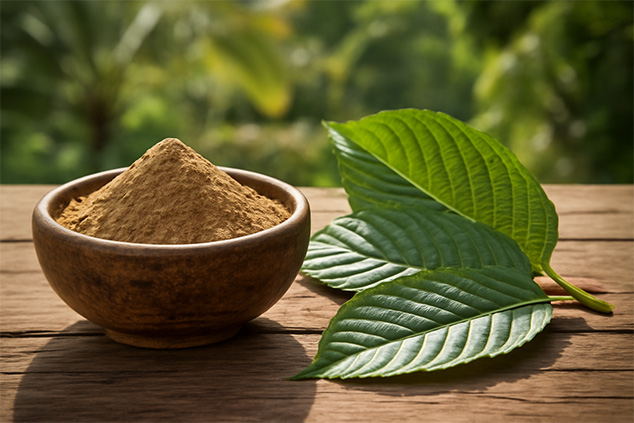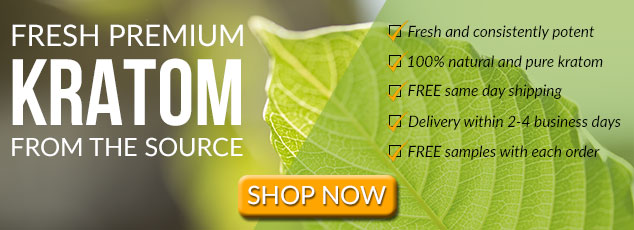Due to a growing number of problems associated with traditional medication, an increasing number of people seek alternative means of coping with a variety of conditions. CDB and kratom are growing in popularity, and you have noticed an interest in kava growing alongside them. Kava and kratom bars are popping up in multiple locations.
While there are similarities between both herbs, they are not one and the same. Let’s take a look at kava vs. kratom to see what the right herb for you is.
What Is Kratom?
Kratom, or Mitragyna speciosa, is a tropical tree from the coffee family native to Indonesia, Thailand, Malaysia, and other Southeast Asian countries. For centuries, locals chewed kratom leaves to increase their energy while working as well as help with a variety of health conditions.
Nowadays, people primarily use kratom powder and, less frequently, kratom capsules and extract as a means of relieving different kinds of pain, stress, and anxiety.
Kratom has three different vein colors and a variety of strains. Depending on the type of vein and strain, as well as the dose, kratom can have soothing, stimulating, or moderate effects.
What Is Kava?
Kava, or Piper methysticum, is a shrub native to the western Pacific Islands, as well as some locations in Polynesia and Micronesia.
Kava is a part of the pepper family, and people use its root because of its sedative, euphoriant, anesthetic, and psychotropic properties. In addition to those, indigenous people also use it in religious and cultural rituals.
Kava vs. Kratom: The Similarities
Relaxing, Euphoric, and Stimulating Effects
Both kava and kratom have relaxing effects and help ease stress, anxiety, and aid with sleep. Kratom effects depend on its dosage; therefore, to achieve relaxing effects, one needs to take higher doses. Slow strains, such as reds, are best for relaxation.
Users of both kava and kratom state that kratom helps them stop mental chatter, which helps them feel more at ease.
Kratom and kava both aid with sleep issues such as insomnia as well as improve mood.
Their relaxing and euphoric properties can also aid with social anxiety. People report feeling more confident and being more talkative in social settings.
Both kava and kratom can also provide stimulating effects. Smaller doses of kratom can be stimulating, while larger doses of kava taken during a short period of time can be stimulating. Some less experienced users report feeling stimulation during their first times of taking kava.
Products
Both kava and kratom are sold primarily in raw powder form, which is made into tea. Some vendors also offer capsules and extracts in addition to raw powder.
Side Effects
The use of kava and kratom can result in side effects. You may experience nausea, vomiting, and other gastrointestinal problems if you take an inappropriate dose of either one of them.
Kratom can cause constipation, especially if one does not consume enough liquids. Since it is from the coffee family, kratom can have similar withdrawal effects that can occur after regularly taking coffee. Those, however, are mild and nowhere near to those of opioids.
One should also take adequate breaks between kratom doses to avoid developing kratom tolerance. This occurs because kratom alkaloids can build up in the body if taken more often than the body can eliminate them.
Kava does not develop tolerance. However, high consumption can potentially be extremely damaging to the liver. Therefore, moderation is important.
Buying Precautions
Kava and kratom aren’t approved by the FDA, and both are raw herbal products. Therefore, it is important to carefully select a vendor for either one of the products.

Kava vs. Kratom: The Differences
Origins and Growth Conditions
While kratom and kava are both tropical plants, their origins are slightly different. Kratom is a tree that is indigenous to Southeast Asia, whereas kava is a shrub native to the Western Pacific Islands, Polynesia, and Micronesia.
Both plants love humidity; however, too much sunlight can be harmful to kava. That’s because kava is a type of understory crop, a plant that thrives beneath the canopy of trees. When it comes to kratom, more sunlight usually develops red vein leaves, while leaves that get less sunlight usually develop green or white stems and veins.
Active Components
Kratom owes its beneficial properties primarily to its two main alkaloids – mitragynine and 7-hydroxymitragynine. However, that’s not all there is to kratom. The currently limited studies show that kratom has at least 25 alkaloids and at least 40 total beneficial compounds.
Kratom alkaloids interact with the same areas in the human brain as opioids; however, kratom alkaloids engage the opioid receptors in a different way. They mimic the effects of opioids resulting in pain-relieving effects but bind with them in a way that does not cause addiction or respiratory depression. Therefore, kratom is frequently used as a pain reliever and a substitute for opioid prescription medication.
On the other hand, kava doesn’t have alkaloids. Instead, it has kavalactones. There are at least 18 kavalactones in kava root, yet six of them are responsible for about 90% of the effects of kava.
Kavalactones interact with the limbic system of our body. It’s the area of our brain that is responsible for emotions, arousal (stimulation), and motivation.
Pain-Relieving Effects
Kratom has strong pain-relieving effects. In fact, 7-hidroxymitragynine is around 13 times more potent than morphine. Because of that, people use kratom to deal with strong chronic and other types of pain as well as an alternative to opioid prescription medication.
Meanwhile, kava is primarily a relaxant. Therefore, it can ease muscle soreness and tension, such as after an intense workout. However, it will not be effective for chronic or any other type of strong pain.
Grind
While both herbs come in powder form, there is a difference between the types of grind.
Most kratom powder is ground into a fine micron powder. You can use it to make kratom tea, mix it with water juice, yogurt, or other drinks, as well as Toss and Wash. There is also a variety of Bali Kratom, named Classic Bali, which is a courser grind, traditionally made by hand.
Kava, however, has two types of grind – medium and micron. The medium grind is slightly courser and prepared similarly to kratom. Micron grind is also referred to as instant kava and can be mixed with liquids such as water and orange juice.
Tea form is believed to be the more effective form of both.
Preparation
People take kava and kratom in tea form.
There are different ways of taking kratom, the most effective being kratom tea. Heat activates kratom alkaloids, given that it is moderate. To prepare kratom tea, one needs to simmer their dose of kratom powder for about 20 minutes. Check out our detailed guide on how to make kratom tea here.
While kava tea is the most common way of taking kratom, its preparation method varies.
Traditionally, one should place kava powder in a mesh bag, submerge it in water, knead that for about 10-15 minutes, and discard the kava pulp when the drink is ready. Kava bars usually use a mechanism that has two hydraulic plates that squeeze the bag that contains the kava root powder.
Legality
Kava is in a slightly more advantageous legal situation than kratom. While some countries around the world prohibit its use, it is not banned in the US. Kratom, however, is illegal in six states in the United States as well as in various cities and counties.
A variety of kratom vendors use that as an argument for choosing kava over kratom. Nonetheless, given the fact that the effects of kava and kratom are not exactly the same, that is not an accurate statement. Kratom is frequently villainized by the authorities due to its potency in relieving pain and the few side effects associated with it.
Kava vs. Kratom: The Verdict
Kava and kratom are both natural and extremely beneficial. However, their effects aren’t the same; therefore, one cannot take them interchangeably and expect the same results.
If relaxation, relief from stress and anxiety, and better sleep are what you are looking for, then trying both can be a good idea. Yet, if you would like to get potent pain relief, then kratom is your herb.
Have you tried both kava and kratom? Share your experience with these herbs with us.



Leave a Reply